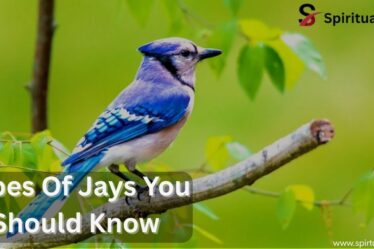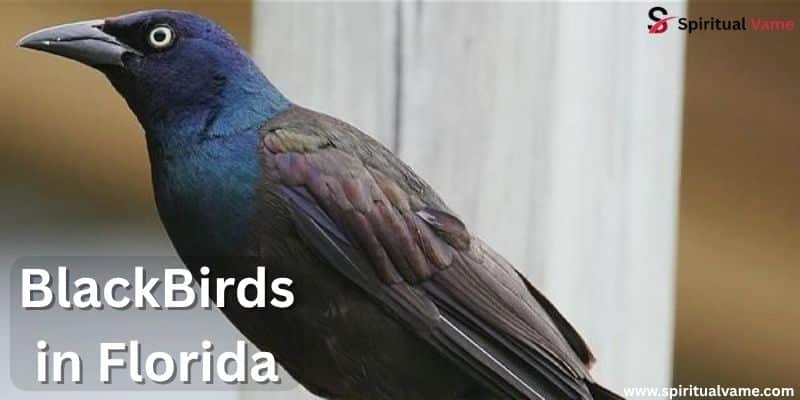
Blackbirds in Florida are a common sight in parks, forests, and near water. These birds come in many sizes and shapes. Some are loud and bold, while others are quiet and shy. You’ll see them in cities, marshes, and open fields. Their dark feathers shine in the sun, showing off hints of blue or purple. Many people enjoy watching these birds in the wild. In this article, you’ll learn about different black birds in Florida and what makes each one special. From grackles to crows, they each have their own story. Let’s explore the most interesting blackbirds in Florida and where you can find them.
9 Blackbirds in Florida That Attracts Your Eyes
Blackbirds in Florida are rich and stunning , and these nine species really know how to catch your attention. Some are glossy with iridescent feathers, others flash bright colors on their wings, and a few surprise observers with unusual calls or behaviors. You’ll find them perched near rivers, flying over lakes, or walking through grassy fields. Each one is unique in how it lives, what it eats, and where it nests.
These birds range from noisy urban dwellers to quiet migrants passing through during breeding or migration seasons. Some, like the Common Grackle, are bold and territorial, while others like the Bobolink are rare and only stop by for a short time. Understanding these birds helps you not only identify them in the wild but also appreciate how they each play a role in the Florida ecosystem.
1. Common Grackle (Quiscalus quiscula)

The Common Grackle is easy to spot with its glossy, purple-blue feathers and long, keel-shaped tail. This bird has a loud, harsh call that echoes through urban areas, farms, and woodlands. Grackles are omnivores, eating everything from grains to insects and even small amphibians. They travel in large flocks and can be quite social, especially during fall and winter.
2. Boat-tailed Grackle (Quiscalus major)
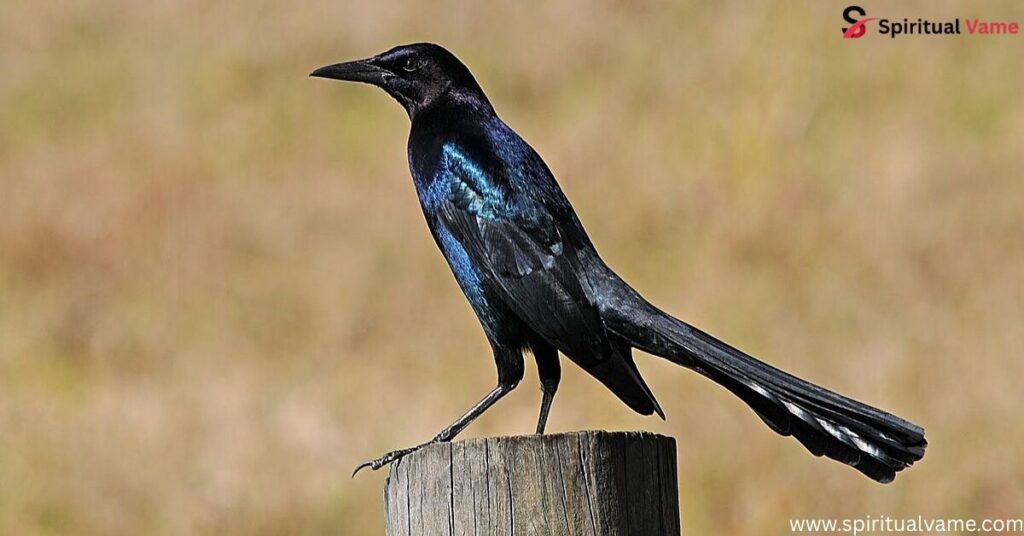
The Boat-tailed Grackle loves Florida’s coastlines and wetlands. Males have dark feathers with an iridescent sheen and a large, puffed tail that looks like a boat—hence the name. These birds are often heard before they’re seen, producing whistles, clucks, and rattles. They’re territorial during breeding seasons and often nest in marshes or near water bodies.
3. Red-winged Blackbird (Agelaius phoeniceus)
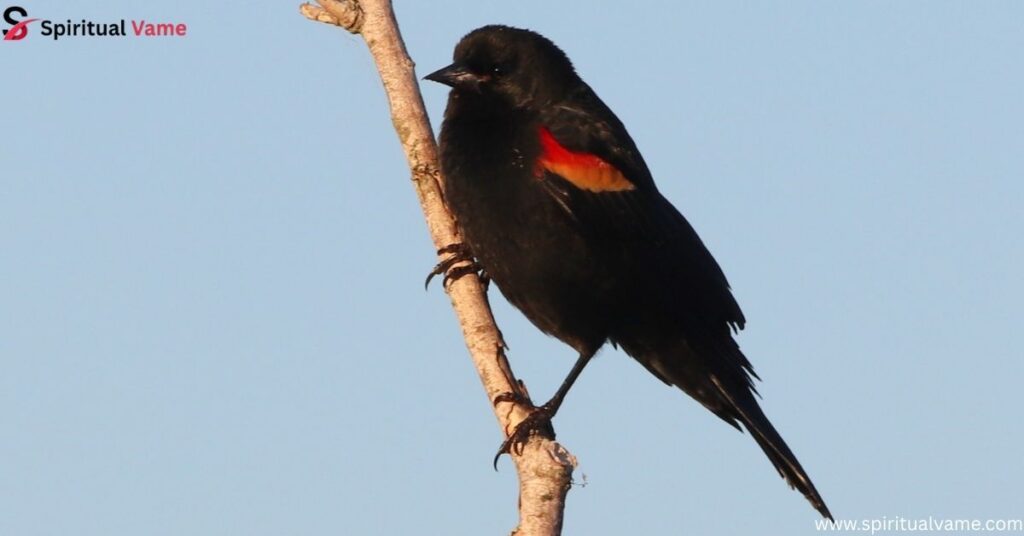
One of the most recognizable birds in the country, the Red-winged Blackbird is famous for the red and yellow patch on its wings. Males show off these bright colors during mating season, while females are more brown and striped. They live in swamps, marshes, and wetlands, often nesting on reeds and feeding on insects and seeds.
4. Bobolink (Dolichonyx oryzivorus)

The Bobolink is a striking visitor that passes through Florida during migration. Males have a yellow back of the head, black belly, and white wings, making them look unlike any other bird. They prefer open grasslands and are known for their bubbly, musical song. Though rare, they bring excitement to any birdwatcher lucky enough to spot one.
5. Common Gallinule (Gallinula galeata)

With its red forehead shield and long legs, the Common Gallinule stands out in Florida’s wetlands. Though not a typical blackbird by name, it has black feathers and behaves like many water birds, swimming with ease and walking across floating vegetation. It builds floating nests and feeds on both plants and small aquatic creatures.
6. American Crow (Corvus brachyrhynchos)
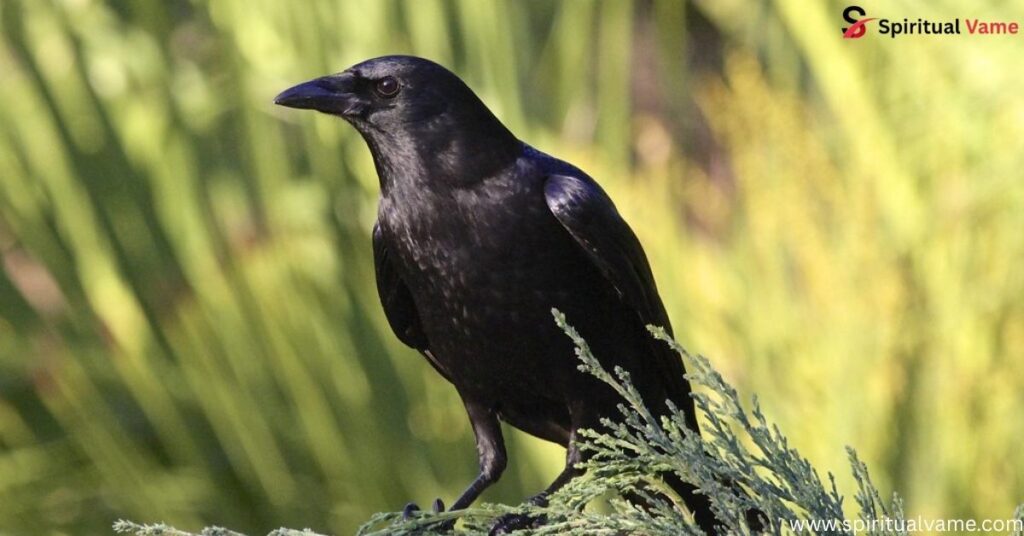
The American Crow is one of the most intelligent birds in Florida. They’re known to use tools, recognize human faces, and communicate in complex ways. Their deep, cawing voice can be heard in cities, farms, and forests. These birds are true omnivores, feeding on anything from insects to garbage, and they often gather in family groups.
7. Cormorant (Phalacrocorax carbo)
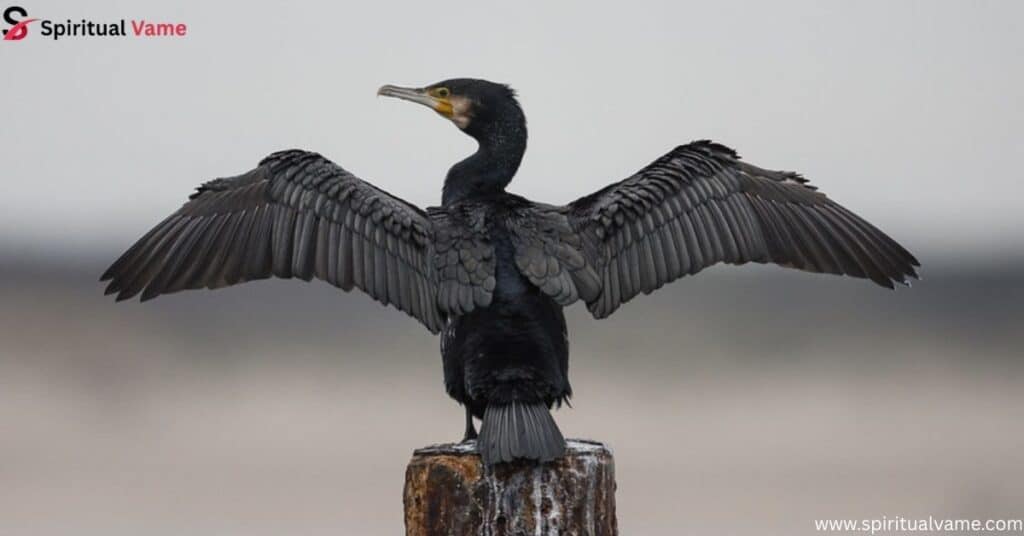
Cormorants are large, long-necked diving birds that fish in lakes, rivers, and coastal bays. They have dark feathers and often sit with their wings outstretched to dry after diving underwater. Their sleek, snake-like appearance when swimming has earned them the nickname “water turkey” or “snakebird” in some areas.
8. Brewer’s Blackbird (Euphagus cyanocephalus)
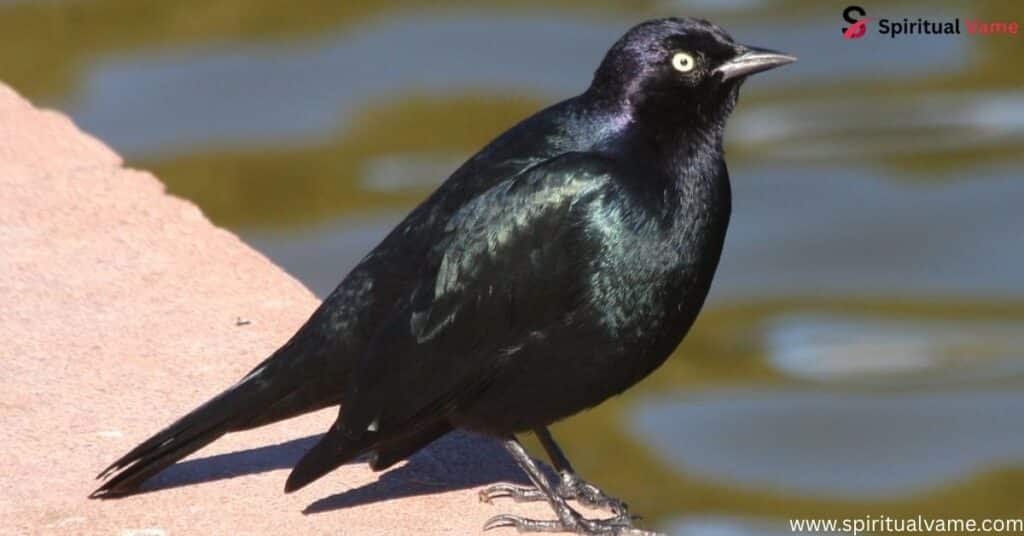
The Brewer’s Blackbird is a shiny, dark bird with a purple-blue gloss, found mostly in open fields, parking lots, and city parks. They walk with confidence, scanning the ground for food, and they’re comfortable around people. Their numbers vary in Florida depending on the season, as many are migratory.
9. Yellow-headed Blackbird (Xanthocephalus xanthocephalus)

Rare in Florida but unforgettable, the Yellow-headed Blackbird boasts a bright yellow head and chest, which contrast sharply with its jet-black body. They prefer cattail marshes during breeding season and feed on insects and seeds. Spotting one is a special treat, especially in southern Florida during migration.
Common BlackBirds in Florida
Several blackbirds in Florida are common . These birds have adapted well to urban environments and are easy to spot in backyards, parks, and along roadsides. Birds like the Common Grackle, American Crow, and Boat-tailed Grackle are seen year-round, while others visit seasonally.
Their diets are just as varied as their habitats. Some are insectivores, others are granivores or scavengers, and a few are omnivores. This helps them thrive in a range of conditions and makes them useful members of their local ecosystems.
Red-winged Blackbirds
The Red-winged Blackbird is one of the most territorial blackbirds in Florida . Males often fight off rivals during nesting season by flashing their red shoulder patches and calling loudly from perches. You’ll usually find them near ponds, wetlands, or swamps, often balancing on reeds.
Females build nests over water, woven carefully into cattails or other marsh plants. Both parents guard their territory fiercely. These birds are also excellent foragers, feeding on insects, seeds, and grains, especially during migration.
Boat-tailed Grackles
Boat-tailed Grackles thrive in coastal areas and are common around salt marshes, beach towns, and piers. The male’s long, boat-shaped tail is their standout feature, especially when they puff it up during courtship displays. They’re loud, bold, and never shy about showing off.
You can see them walking confidently on sidewalks, hopping on picnic tables, and even raiding trash cans. Despite their rough behavior, they’re intelligent and have strong social bonds within their flocks.
Less Common BlackBirds in Florida
Some blackbirds in Florida are less common but just as fascinating. These species may be harder to spot, requiring patience and sometimes a bit of luck. Still, each offers a unique experience and insight into Florida’s natural world.
Whether it’s the rare cry of the Smooth-billed Ani or the graceful Anhinga drying its wings on a tree stump, these birds add depth to Florida’s avian biodiversity. Let’s look at a few of these special species.
Smooth-billed Anis
Found mostly in southern Florida, the Smooth-billed Ani looks like a small crow with a thick, curved beak. It prefers tropical areas and is most often seen in dense shrubs or near farmlands. Anis are social birds, living in groups and often building communal nests.
They eat insects, fruits, and small animals, and they make a unique whiny sound that’s hard to forget. Though they’re not widespread, seeing one is a memorable moment for any birdwatcher.
Black Vultures
Black Vultures are large, powerful birds with short tails and broad wings. Unlike Turkey Vultures, they rely more on sight than smell to find carrion. They are often seen soaring high or gathered around roadkill or garbage sites in suburban or rural areas.
Despite their grim reputation, vultures are essential scavengers, cleaning the environment and helping prevent the spread of disease. They often fly in flocks and sometimes roost in large groups on buildings or trees.
Anhingas
Known as the “snakebird” because of their long neck, Anhingas swim low in the water with only their head and neck visible. They’re expert divers, hunting fish beneath the surface, and after swimming, they perch with wings spread wide to dry.
These birds are silent hunters, using their sharp beaks to spear prey. Found in freshwater lakes, swamps, and marshes, Anhingas are a must-see for those exploring Florida’s wetlands.
Unique Traits and Behaviors of Black Birds
What makes black birds in Florida so interesting isn’t just their dark feathers—it’s their behavior. These birds have developed unique traits that help them survive in a range of environments. Many, like the Common Grackle and Boat-tailed Grackle, have glossy, iridescent plumage that shines in the sunlight, signaling strength during mating displays. Others, such as the American Crow, are incredibly intelligent, using tools, solving problems, and even working together in family groups to raise their young.
Some species, like the Anhinga and Cormorant, have adapted to life in the water. They dive to catch fish, then perch with their wings wide open to dry off. Others, like the Red-winged Blackbird, use loud songs and aggressive postures to guard their territories. From social flocking behaviors to precise foraging techniques, each bird brings its own flair to Florida’s wild landscapes. These behaviors also make black birds easier to spot for those interested in birdwatching or avian observation.
Best Locations for Observing Black Birds
If you’re looking to spot black birds in Florida, you won’t have to go far. Some of the best spots are found in state parks, wildlife refuges, and even along residential lakes. For instance, Everglades National Park, Merritt Island National Wildlife Refuge, and Paynes Prairie Preserve are great for seeing species like the Anhinga, Common Gallinule, or Cormorant. Coastal areas such as Tampa Bay or Sanibel Island are hotspots for Boat-tailed Grackles and Black Vultures.
If you’re inland, look around wetlands, lakes, or marshes. These places attract Red-winged Blackbirds, Gallinules, and Purple Martins. Even city parks can surprise you with sightings of Brewer’s Blackbirds, American Crows, and Grackles scavenging or nesting. Just bring a pair of binoculars, a field guide, and a little patience. Whether you’re by the coast or deep in the woods, Florida is full of places to experience these birds in their natural habitat.
Black Water Birds in Florida
Florida’s wetlands and lakes are home to many black water birds, which are adapted for a life of swimming and diving. The Anhinga is a prime example—it swims with just its neck visible and stabs fish with its sharp bill. After hunting, it perches on logs or branches to dry its wings, creating a dramatic silhouette.
The Cormorant is another expert diver, seen often in coastal regions or large freshwater lakes. These birds are fast swimmers and have hooked beaks to catch slippery prey. Their dark feathers absorb sunlight, which helps warm them up after spending time in cool water. These species are essential for controlling fish populations and keeping aquatic ecosystems healthy.
Conclusion
From the swampy Everglades to sunny city parks, blackbirds in Florida are everywhere, and each one has a story to tell. Whether you’re watching a Common Grackle strut across a sidewalk, hearing the haunting call of an American Crow, or spotting the rare Yellow-headed Blackbird during migration, these birds add color, life, and mystery to the Sunshine State’s skies.
Understanding these birds helps us connect more deeply with the natural world. Their presence reminds us of the beauty that exists all around—even in the darkest of feathers. So grab your binoculars, pack a field guide, and head outdoors. Florida’s black birds are waiting to be discovered.

